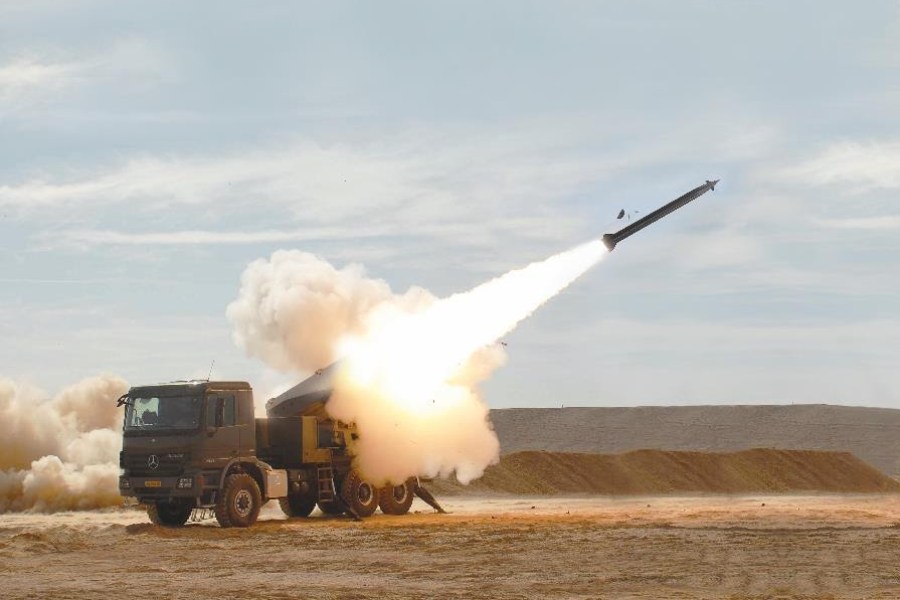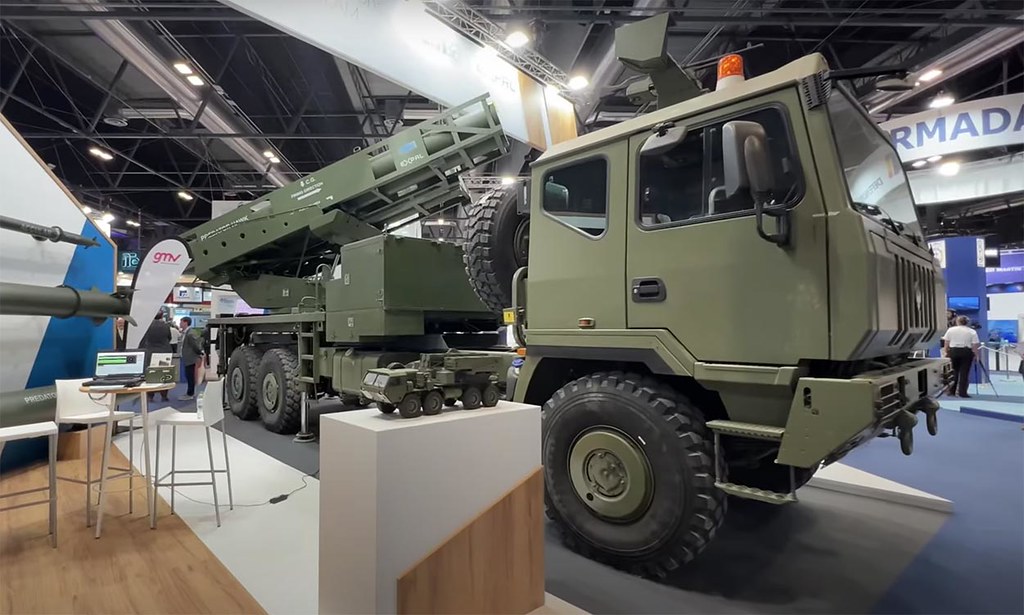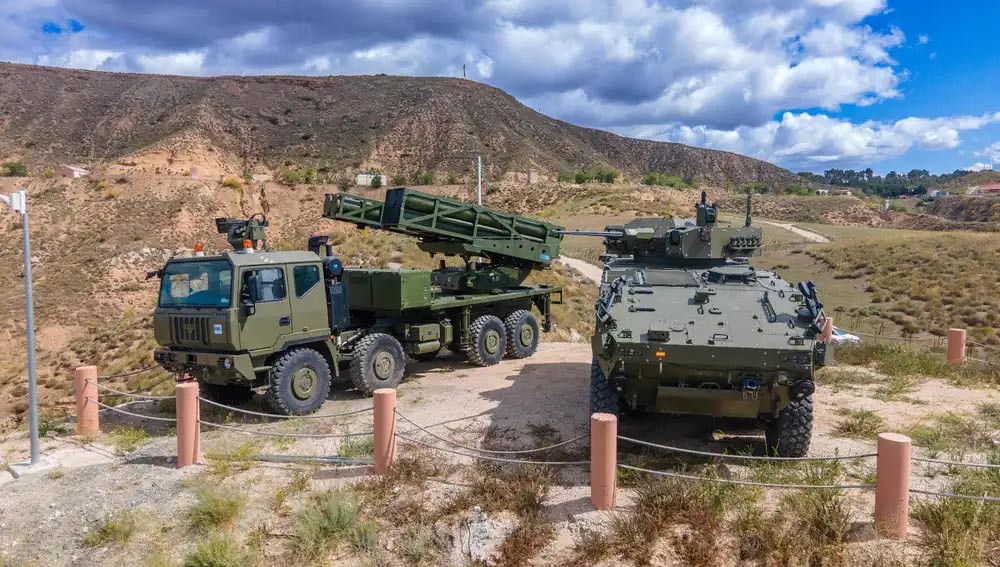SILAM, the advantages and disadvantages of the new rocket launcher of the Spanish Army
Acquisitions of new weapons systems by Spain have usually been surrounded by certain controversies for years.
A collaboration between an Israeli company and two Spanish companies
Last Friday, the State Contracting Platform published the award of the new SILAM (High Mobility Rocket Launcher System), which comes to cover the gap left by the withdrawal of the Teruel rocket launcher in 2011. The Ministry of Defense has awarded this system to a temporary union (UTE) of two Spanish companies, Escribano Mechanical & Engineering and Expal, which in May they presented at FEINDEF a proposal that combines a PULS launcher from the Israeli company Elbit Systems with an IVECO 6x6 truck, although it seems that finally the chosen vehicle will be an IVECO 8x8.

An artillery expert's analysis of the SILAM
The award published on Friday indicates that the total amount of the project is 576,449,111.59 euros. About this amount and the characteristics of SILAM, an interesting thread published by David has appeared on Twitter Díaz Cabo, author of excellent books on military issues (I recommend them) and several of whose works deal, precisely, with artillery systems. In fact, Díaz Cabo was a career military man and served in the Artillery Arm of the Spanish Army, so he has great knowledge on this subject.
Díaz Cabo has explained what the SILAM system acquired by Spain is like: "In total, 13 launchers, 12 ammunition trucks will be purchased, 4 VAMTAC group command post, 2 VAMTAC group command post battery, 4 VAMTAC section command post, 6 VAMTAC for OAV, 324 122 mm Accular rockets, 112 EXTRA 306 mm missiles and 32 Predator Hawk 370 mm missiles. All this ammunition will be received with the half with HE [high explosive] warheads and the other half with penetrating warheads."

The ammunition that SILAM will use
Regarding the weapons that the Army will use in SILAM, Díaz Cabo points out that three types of ammunition have been selected: the 122 mm Accular missile, guided by GPS/inertial (32 per truck), with a range of 35 km; the EXTRA 306 mm missile (8 in total), guided by GPS/inertial and a range of 150 km; and the 370 mm Predator Hawk missile (4 in total), guided by GPS/inertial and a range of 300 km.
At this point we find the first drawback of SILAM: it uses different ammunition than that used by the majority of NATO countries, according to Díaz Cabo, who analyzes the ammunition in the aforementioned Twitter thread used by the most widespread system, which is the American HIMAR: M-26 and M-28 missiles (with a range of 45 km), the M-30/M-31/M-32 GMLRS guided (92 km), the guided ER GMLRS (150 km), the MGM-140 ATACMS (165-300 km) and the GLSDB (150 km).
The problem with the size of SILAM: “It is not airtransportable”
Díaz Cabo points out a second drawback: "It is not air transportable, like HIMARS", due to the large size of the Spanish system, a characteristic that was already evident in its presentation at FEINDEF in May. This size will limit the projection capacity of this system, something not irrelevant taking into account the importance that a weapons system can be transported on aircraft such as the A400M Atlas that the Air Force has today. Spain.

The cost of SILAM compared to other systems
Finally, the third drawback pointed out by Díaz Cabo is the cost of the SILAM: "The price per launcher is about 23 million Euros. Its competitors were the HIMARS at 7 million per unit or the South Korean Chunmoo at 5 million/unit for Poland. It is true that those 23 million include the ammunition", admits the artillery expert, but even so we are facing a considerable difference.
All in all, today Díaz Cabo has published a second thread qualifying this a bit: "yesterday I gave the wrong price for our PULS, it came out to 26.8 million per unit (348 million E for all). Thanks to my friend who gave me the correct amount, since I counted the rocket launcher contract only at 300 million and it is 348." Díaz Cabo adds that Denmark purchased 8 complete PULS launchers, with accessories and auxiliary vehicles and unquantified ammunition for 14 million euros per unit, while Poland has acquired 288 South Korean Chunmoo, without ammunition, for 11 million euros per unit, and Italy has purchased 21 HIMARS with accessories for 19 million euros per unit, but without ammunition .
After reviewing the costs of the ammunition used by the HIMARS equivalent to those of the SILAM, Díaz Cabo concludes : "With these numbers, it really is just as expensive if we go for the high price, and even cheaper if we put the right price for the Acular, the HIMMARS at 29 million per the high and 25 for the low. The Chunmoo would be 22 million." The comparison between the prices of these systems will become clearer when the price of the ammunition purchased by Spain is known.

The advantages of the PULS system chosen for SILAM
Of course, it's not all disadvantages. The PULS chosen for SILAM is a very versatile system. In March 2023, The Netherlands Ministry of Defense explained its choice of PULS over HIMARS like this:
"After careful consideration between the American HIMARS system and the Israeli PULS system on the basis of operational evaluation criteria, delivery time, price, risks and possibilities of international cooperation, the PULS system was chosen. The first system will be transferred to end of 2023. Compared to HIMARS, more precision-guided missiles are delivered within the budget. PULS also has greater operational sustainability because it can carry more missiles in the system. The artillery system The PULS rocket system also has an open architecture, which will make it suitable (in the near future) for munitions from European manufacturers. This contributes to an increase in European strategic autonomy.
At In an article published in April in Popular Mechanics, Sébastien Roblin noted of the Dutch case: "price was undoubtedly a big factor in PULS’s favor, with the Israeli contract likely valued at $133 million for 20 launches, as well as missiles and rockets for both combat and training use and ammo-resupply vehicles—roughly one-fifth the cost of the U.S.’s proposed HIMARS sale. The Royal Netherlands Army plans to form two batteries of eight launchers, with another four set aside for training."

Another important aspect that weighed on the Dutch choice of PULS over HIMARS was the delivery times:"Not only were both the launchers and their rocket ammunition found to be much cheaper, but the Israeli weapons could be delivered late 2023 through 2026, while HIMARS would only arrive “significantly later”, Roblin notes.
To these characteristics we should add, in the case of Spain, the advantage of having two Spanish companies in the process, companies that, in addition, already have extensive experience in weapons systems. Being able to collaborate on this project with a high-level Israeli company such as Elbit is another issue to consider in relation to this system. What is worth asking is whether the poor relationship between Pedro Sánchez's government and Israel could end up affecting this project, as I already pointed out here.
---
Main photo: Escribano.
|
Don't miss the news and content that interest you. Receive the free daily newsletter in your email: |
- Most read
- The firearms used by the Pontifical Swiss Guard, the smallest army in the world
- Lampart, the new camouflage that the Polish Army is testing for its uniforms
- The seven aircraft carriers that have been sunk after World War II
- The military salute: origin, types & curiosities
- The formation flight of fighters of Spain and Germany over Naval Station Rota
- The Spanish Legion shows an assault exercise using drones for various purposes
- Sierra Army Depot, a huge United States base with hundreds of Abrams tanks stored

 ES
ES







Opina sobre esta entrada: